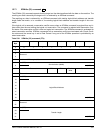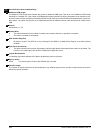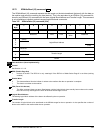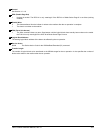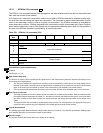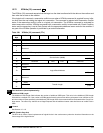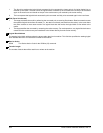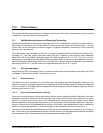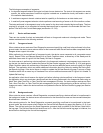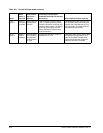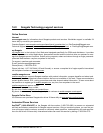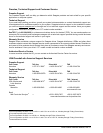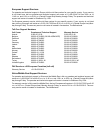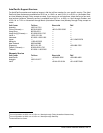
Fibre Channel Interface Manual, Rev. D 355
13.0 Drive features
This section describes several features included for disc drives. Refer to the individual drive’s product manual
to determine if your drive supports these features.
13.1 Self-Monitoring Analysis and Reporting Technology
Self-Monitoring Analysis and Reporting Technology (S.M.A.R.T.) is designed to recognize conditions that indi-
cate imminent drive failure and provide sufficient warning to the host system of impending failure. The host
system may use the information provided to trigger it to perform diagnostic, preventative, and/or protective
functions (e.g., data backup).
The initiator sets up the parameters for S.M.A.R.T. operation using Mode Select Informational Exceptions Con-
trol page 1Ch. The drive reports information about S.M.A.R.T. operation using Request Sense Additional
Sense Code 5D 00 and Mode Sense data page 1Ch. Refer to sections 12.11, 12.12, 12.13, and 12.14 for
descriptions of the Mode Select and Mode Sense commands. Refer to Section 12.16 for details on the Infor-
mational Exceptions Control page. Refer to the individual drive’s product manual to determine if your particular
drive supports S.M.A.R.T. and the extent of its implementation of the S.M.A.R.T. system.
13.2 Self-test operations
Default Self-test (DST) technology is part of a system to recognize drive fault conditions that qualify it for return
to Seagate. If the drive fails the test, remove it from service.
13.2.1 Default self-test
The default self-test is mandatory for all device types that support the Send Diagnostics command. The
response is simply a Good status if the test is successful or a Check Condition status if the test fails. Additional
status is available in the Default Self-test Diagnostics Results page by using the Receive Diagnostic Results
command (see Section 12.33).
13.2.2 Short and extended device self-tests
There are two optional types of device self-test that may be invoked using the Self-test Code field in the Send
Diagnostics command: a short test and an extended test. The goal of the short device self-test is to quickly
identify if the logical unit is faulty. A goal of the extended device self-test routine is to simplify factory testing
during integration by having logical units perform more comprehensive testing without application client inter-
vention. A second goal of the extended device self-test is to provide a more comprehensive test to validate the
results of a short device self-test if its results are judged by the application client to be inconclusive.
The criteria for the short device self-test are that it has one or more segments and completes in two minutes or
less. The criteria for the extended device self-test are that it has one or more segments and that the completion
time is vendor-specific. Any tests performed in the segments are vendor-specific.



